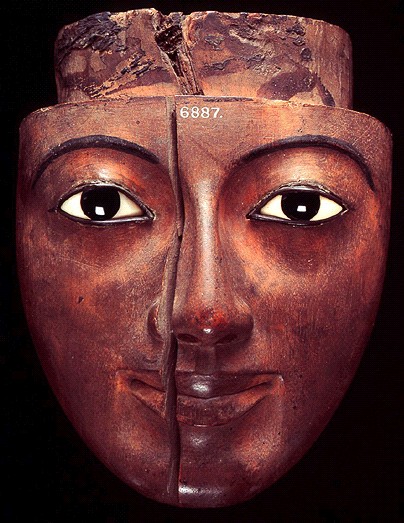|

|
FACE
OF A COFFIN
Wood, eyes of obsidian and ivory set in bronze sockets
18th Dynasty, c. 1400 BC or later
|
|
|
The chief purpose of ancient
Egyptian funerary rituals (including mummification) was to enable
the individual to pass from the earthly life to a new existence,
in which he or she would possess the attributes of divine beings.
The outward appearance of the transfigured dead would reflect their
new, god-like status. For this reason all images of the dead, whether
mummy-masks, anthropoid coffins or free-standing statues, were idealized,
representing the individual as eternally youthful and free from
all physical disabilities or blemishes. This face once formed part
of the lid of a mummiform coffin. |
|
REPLAY SLIDE
SHOW | Slide Show Index

All images reproduced by permission
of the Trustees of the British Museum. Informational text provided by
the British Museum.
The History Place Terms
of Use: Private home/school non-commercial, non-Internet re-usage only
is allowed of any text, graphics, photos, audio clips, other electronic
files or materials from The History Place™
|
|

